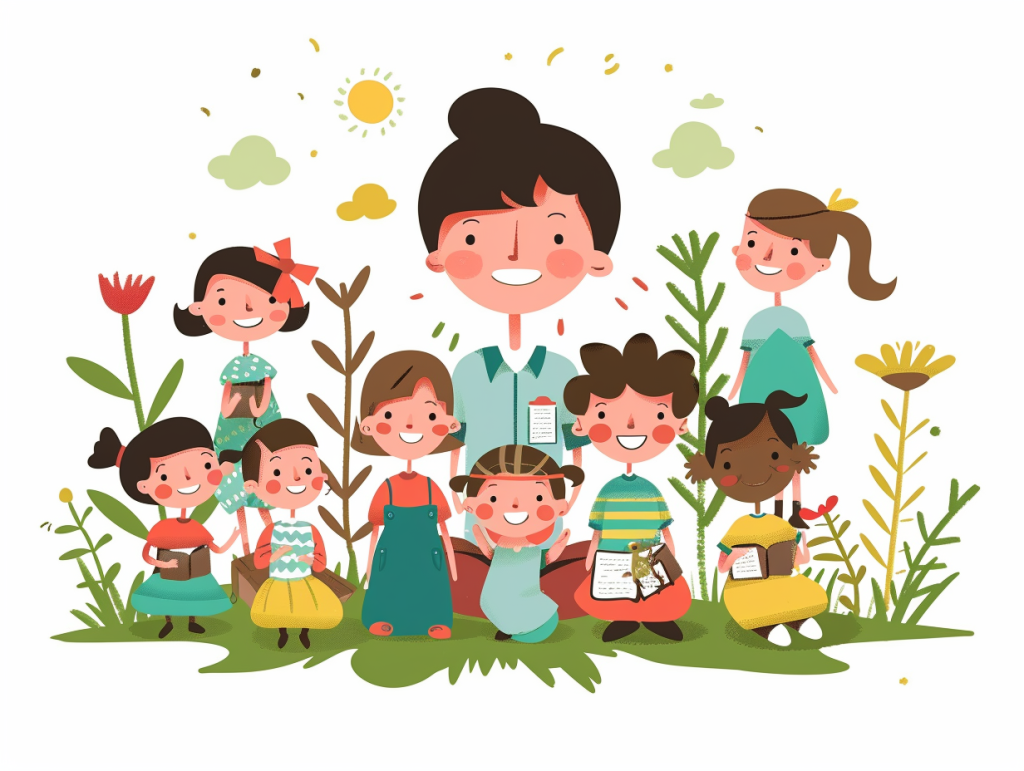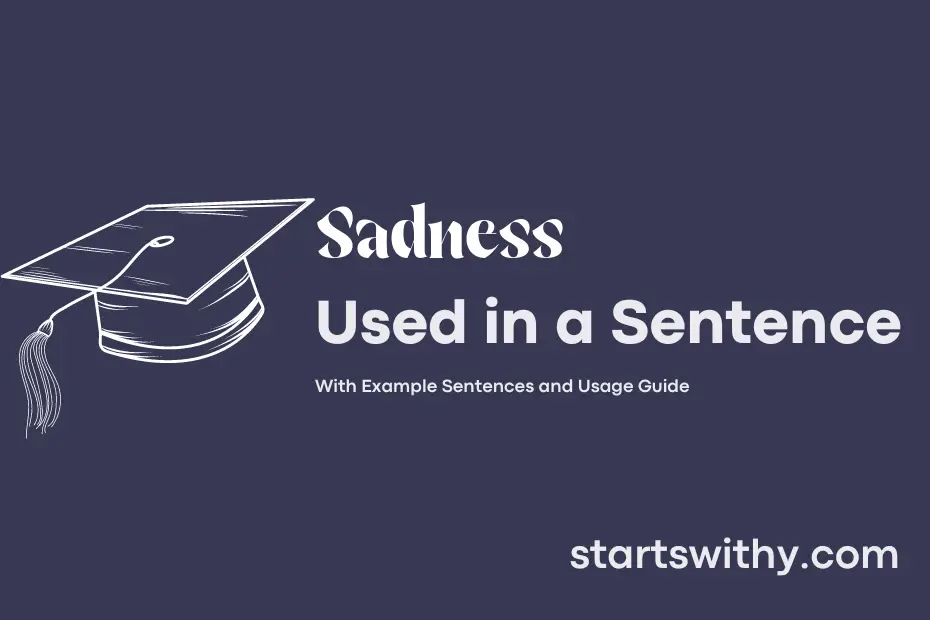Have you ever tried to convey your feelings of sorrow and melancholy through words? This is where an example sentence with “sadness” can help you express your emotions effectively.
An example sentence with “sadness” is a phrase that encapsulates the feelings of unhappiness, grief, or disappointment. It serves as a representation of deep sorrow that can resonate with readers and evoke empathy towards the emotion being described.
7 Examples Of Sadness Used In a Sentence For Kids
- I felt sadness when I lost my toy.
- A hug can help with sadness.
- Drawing pictures can make sadness go away.
- Talking to a friend can make sadness better.
- It’s okay to feel sadness sometimes.
- Running and playing can help with sadness.
- Tomorrow is a new day, and the sadness will go away.

14 Sentences with Sadness Examples
- Sadness enveloped the room as the college students completed their last exam and realized their time together was coming to an end.
- The overwhelming sadness of missing home hit the student from a small town when they were alone in their hostel room.
- The constant pressure to excel in academics led to a feeling of sadness among the college students.
- The sadness of not being able to participate in extracurricular activities due to a hectic schedule affected many students.
- The sight of empty library shelves during exam season filled the students with a sense of sadness.
- The student’s face was a mask of sadness as they received a failing grade on their project.
- The unexpected cancellation of the college fest brought a wave of sadness among the students who had been eagerly looking forward to it.
- The thought of graduating and leaving behind friends and memories sparked a feeling of sadness in many final year students.
- The realization that they were missing out on important social events due to academic commitments brought a tinge of sadness to the students.
- The news of a classmate dropping out of college due to personal reasons cast a shadow of sadness over the entire campus.
- The inability to balance studies, social life, and personal well-being often led to a sense of sadness among college students.
- The sight of empty classrooms and deserted corridors during the holiday season filled the campus with a sense of sadness.
- The continuous struggle to meet high expectations and demands of family members resulted in a feeling of sadness creeping into the students’ lives.
- The overwhelming sadness of not being able to pursue their dream career due to financial constraints weighed heavily on the minds of many college students.

How To Use Sadness in Sentences?
Sadness is a powerful emotion that can be expressed in various ways in a sentence. To use the word effectively, consider the following tips:
- Identify the Feeling: Before using the word sadness, make sure that the situation or person you are describing truly evokes a sense of deep sorrow or unhappiness.
- Choose Appropriate Context: Ensure that the context in which you are using the word sadness is suitable. It is typically used to convey feelings of grief, disappointment, or melancholy.
- Use Descriptive Language: When incorporating the word sadness into a sentence, try to provide additional context or descriptive language to enhance the emotional impact.
- Consider Tone: Depending on the tone of your writing or speech, the word sadness can be expressed in a somber, reflective, or empathetic manner.
Example Sentences:
- The sadness in her eyes was unmistakable as she spoke about her lost pet.
- He couldn’t hide the sadness in his voice when he talked about the end of his favorite TV series.
- The story she told filled me with a deep sense of sadness for the struggles she had endured.
By following these guidelines, you can effectively incorporate the word sadness into your writing or conversations to convey emotions of sorrow and distress.

Conclusion
In conclusion, the varied examples of sentences with the keyword “sadness” illustrate the range of emotions and experiences associated with this feeling. From heartbreak and disappointment to mourning and loneliness, sadness is a complex emotion that can manifest in different ways. Through phrases like “Tears welled up in her eyes as she spoke about her loss” or “His face betrayed his profound sadness,” the depth and intensity of sadness are effectively conveyed.
Overall, these sentences with sadness paint a vivid picture of the human experience, capturing moments of vulnerability, pain, and introspection. Whether expressing personal struggles or empathizing with others, the power of language in conveying sadness allows us to connect with our emotions and understand the impact it has on our lives. Through these examples, the complexity of sadness is depicted with clarity and depth, reminding us of the universality of this profound human emotion.



